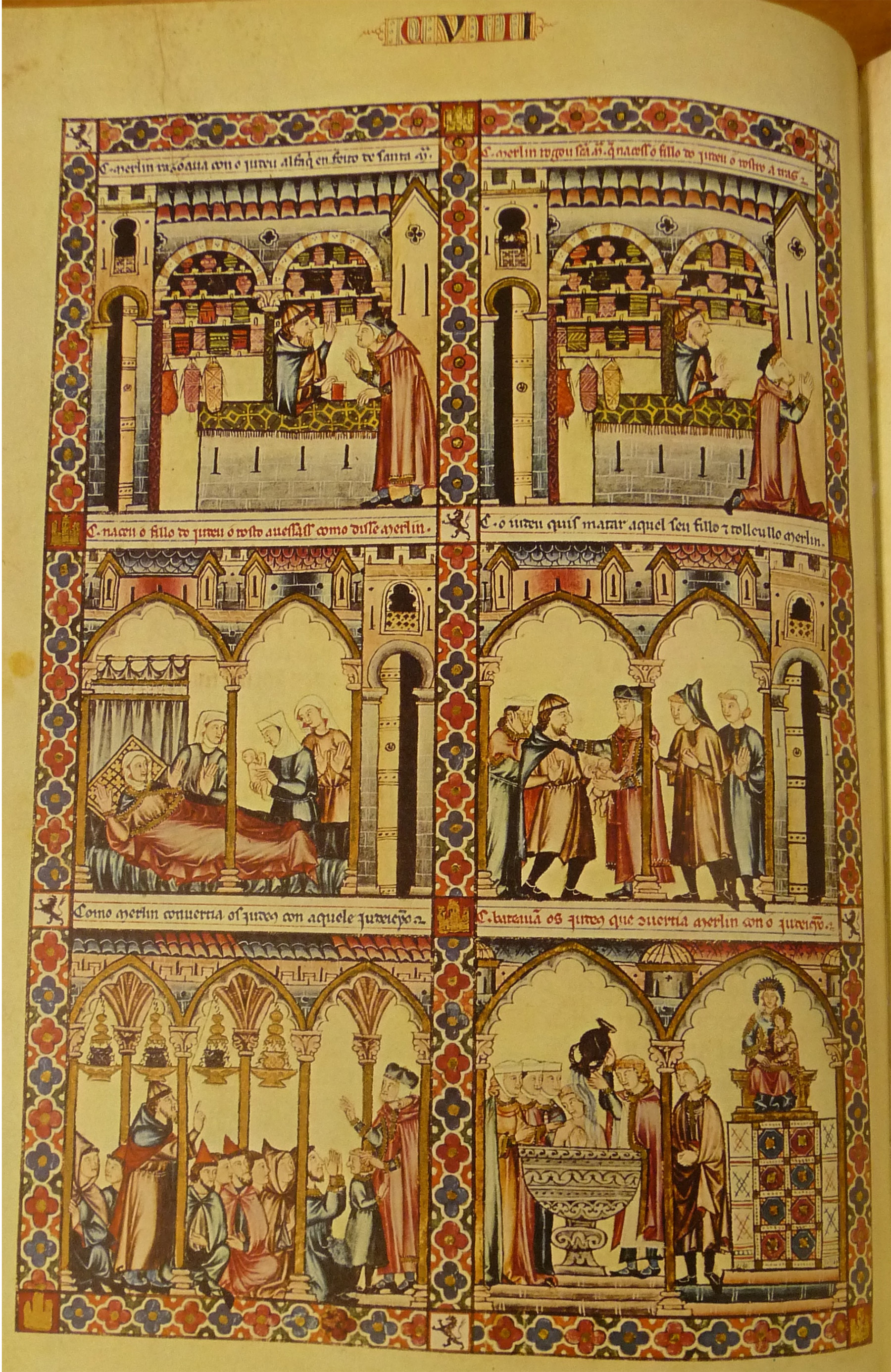The Cantigas de Santa Maria is a collection of over four-hundred short accounts of miracles performed by the Virgin Mary interspersed with songs of praise, produced in the court of Alfonso X of Castile (r. 1252-1284). This image is from one of four extant codices of the collection produced in the 1270s and 80s, Escorial MS T.I.1, the 'códice rico,' as it is known by scholars due to its luxurious nature; one of a small number of facsimiles of this stunning manuscript is held by the University of Pennsylvania library. Almost all the poems in medieval Galician are illustrated with a full-page illustration and are also set to music. Intended to establish Alfonso as Mary's royal champion, the volumes constitute an important testament of the cultural vibrancy of the Castilian court, its development of music, literature and art, as well as its engagement with Jewish and Muslim cultures.
The miracle story shown here nevertheless provides a complicated picture of inter-cultural relations. It begins with a debate between a Jewish al-faquin
The curious story reflects the integration of contemporary literary and devotional trends, as popular secular literature was incorporated into a long-standing legendary tradition of depicting Jewish animosity towards the Virgin. Additionally, it suggests knowledge of the public debate organised by James I, King of neighbouring Aragon, between prominent figures from the Jewish and Christian communities in 1263. But rather than encourage such disputations, the story here, like many others in the volume, seems rather to promote the intercessory role of the Virgin in converting Jews to Christianity. The story and the collection in which it is found therefore illustrate how the tremendous growth of the cult of the Virgin Mary helped shape ideas about Jews and Judaism, as well as relations between Jews and Christians, in thirteenth-century Iberia.
